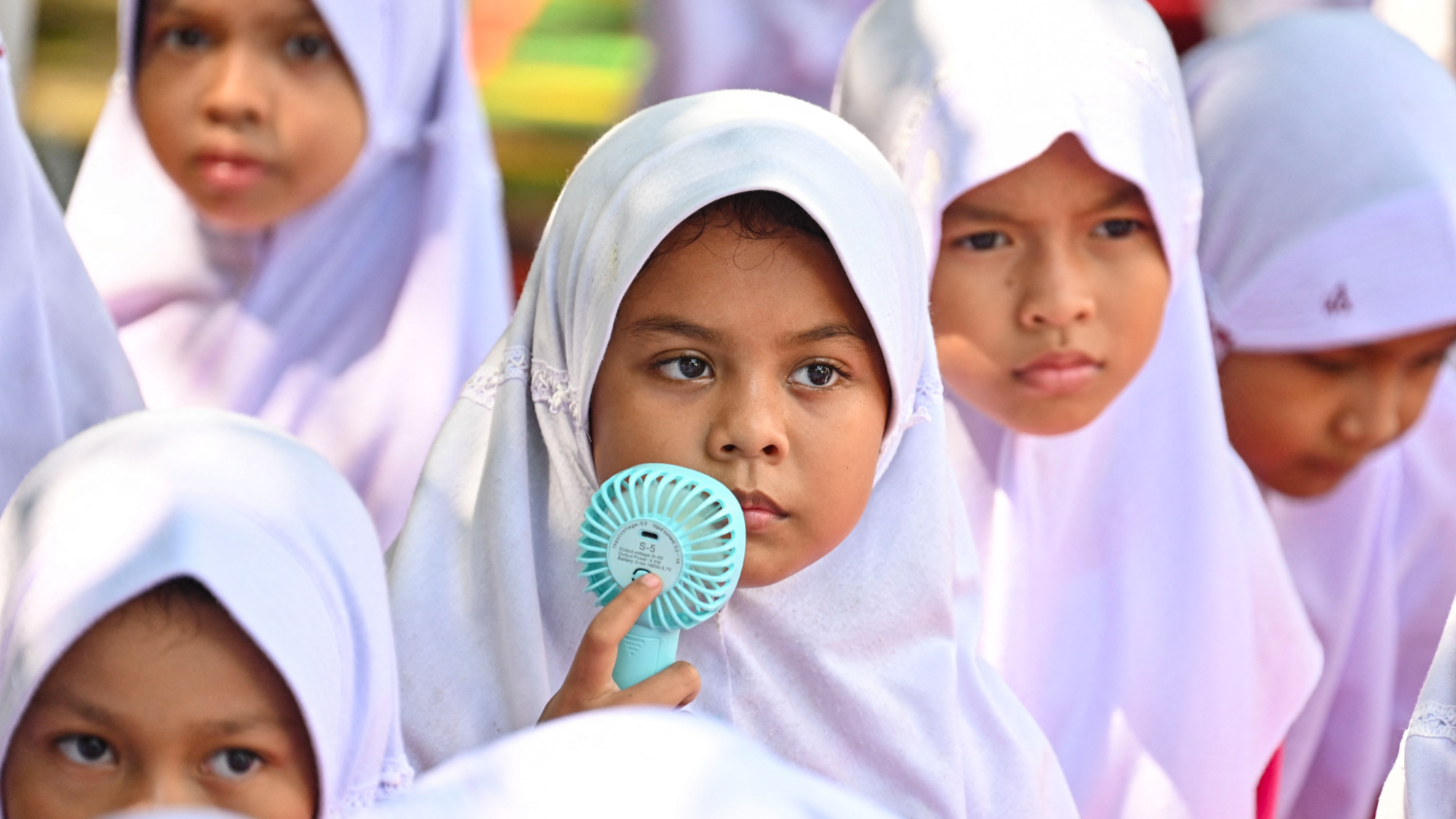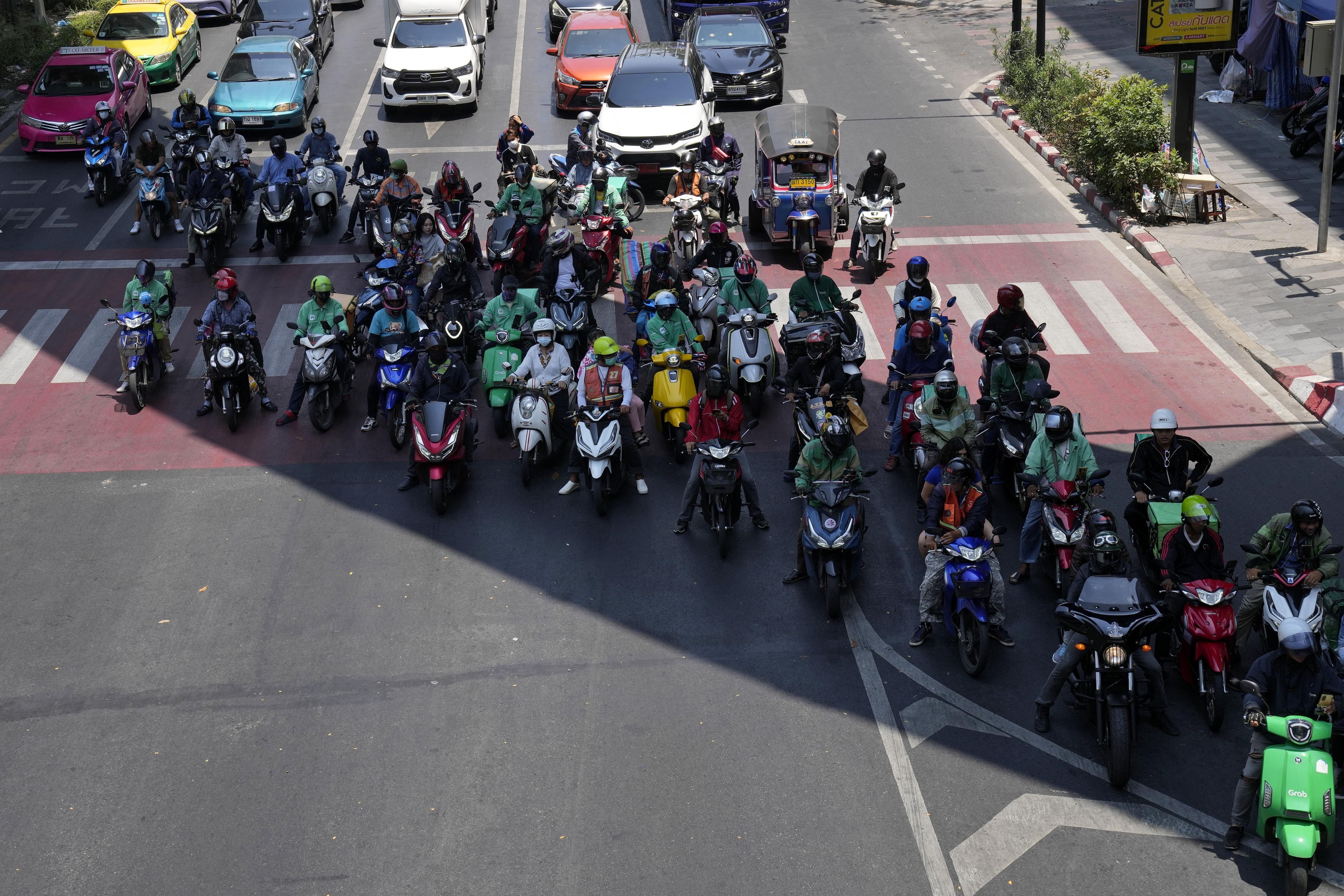
As a supervisor for a construction company in Jakarta, Yudi Hermawan has had to constantly advise his workers to drink more water to survive the extreme heat that is currently scorching the Indonesian capital and much of the region.
Hermawan said the heat is even worse at their project site as it is surrounded by tall buildings that block the inflow of fresh air.
“We are lucky because so far none of my workers has fallen ill,” Hermawan said, adding that the heat can sometimes feel “almost unbearable”.
Extreme heat has also parched farm lands, threatening food security. The long dry spell has damaged over 6 billion pesos ($104 million) worth of crops in the Philippines and increased saline intrusion in Vietnam's Mekong Delta
The months of March to May are usually the hottest period for Indonesia and most countries in the Asia-Pacific. However, weather forecasters noted that this year has been among the hottest in decades, with average temperatures hitting over 40 degrees Celsius.
ALSO READ: Study: Summer 2023 was hottest in 2,000 years
Indonesia recorded its hottest April in more than 40 years, according to Achmad Fachri Radjab, head of the country’s Meteorology, Climatology, and Geophysical Agency.
"The average air temperature in April 2024 was the highest compared to April from 1981-2023," he told AFP.
The Copernicus Climate Change Service, the European Union’s climate change monitoring service, said in its latest bulletin that global average surface air temperature last month was 15.03 C, or 0.67 C above the 1991-2020 average for April.
According to scientists from the World Weather Attribution, a group of researchers from various institutions, “in the current climate, warmed by 1.2 C since pre-industrial times due to human activity, this kind of extreme heat event is not very rare”.
William Yu, founder and CEO of the Hong Kong-based World Green Organisation, said climate change has caused the blistering heat that is harming human health.

Yu said governments need to develop policies and compensation programs for health problems such as heat stroke and dehydration caused by extreme heat. This is especially true for workplaces that have insufficient ventilation or for those who need to work outdoors like construction workers.
A total of 61 people in Thailand have died from heatstroke since the start of the year, according to local health authorities. The Philippines Department of Health reported 34 cases of heat-related illness, including six deaths due to heatstroke, in the first four months of the year, while two people died in India’s southern state of Kerala reportedly due to the heat wave
“It is indeed time for all countries to take measures for all those changes” to protect the safety and health of the worker, Yu told China Daily.
Anjal Prakash, associate professor and research director at the Bharti Institute of Public Policy at the Indian School of Business in Hyderabad, said the climate change-induced heat wave in South Asia is exacerbated by rapid urbanization and deforestation.
ALSO READ: World's record-breaking temperature streak extends through April
He said establishing cooling shelters, distributing potable water, and raising public awareness are among the immediate measures that can be implemented to counter the impact of extreme heat. Prakash said long-term strategies involve reforestation, urban planning for heat resilience, and transitioning to renewable energy sources to mitigate climate change.
Heatstroke due to extreme heat has killed several people in Asia in recent months.
A total of 61 people in Thailand have died from heatstroke since the start of the year, according to local health authorities. The Philippines Department of Health reported 34 cases of heat-related illness, including six deaths due to heatstroke, in the first four months of the year, while two people died in India’s southern state of Kerala reportedly due to the heat wave.
READ MORE: Over 50 die of heatstroke in central Myanmar in April
The heat wave has also led to suspension of classes in Bangladesh, the Philippines, and parts of India. The WWA said the extreme heat that has forced thousands of schools to close down in South and Southeast Asia can “negatively impact” the development of human capital in these regions.
Extreme heat has also parched farm lands, threatening food security. The long dry spell has damaged over 6 billion pesos ($104 million) worth of crops in the Philippines and increased saline intrusion in Vietnam's Mekong Delta.

Several places in India's western state of Rajasthan were in the grip of extreme heat, officials said. According to the state-run broadcaster All India Radio, in most of the districts, the maximum temperature was measured above 42 C in early May.
“Due to the scorching heat, people in many towns and cities are avoiding coming out of their homes during the day time," a local government official said, noting that decision-making power has been granted to local magistrates, or collectors. “The government has given the responsibility to the collectors to declare school holidays or change their timing.”
Leonardus Jegho in Jakarta contributed to this story.
Contact the writers at prime@chinadailyapac.com


